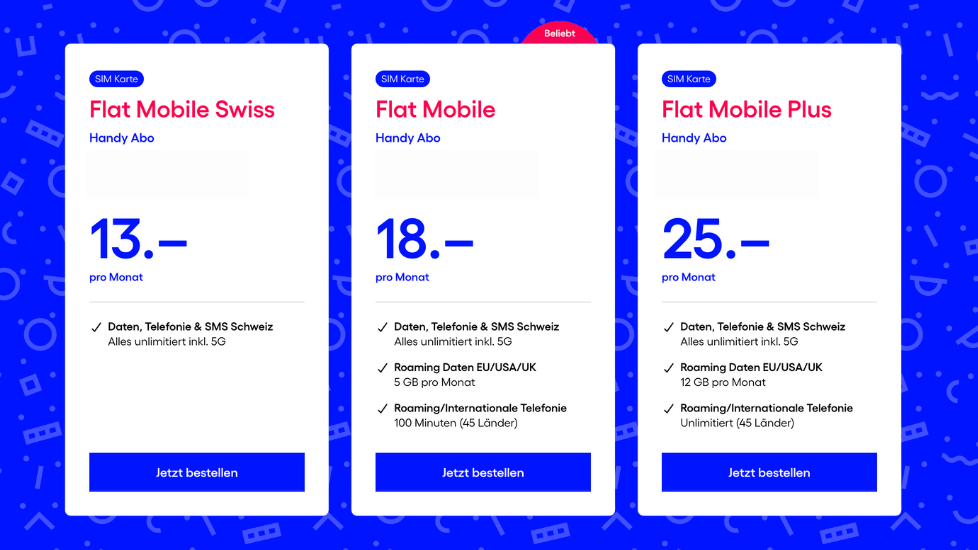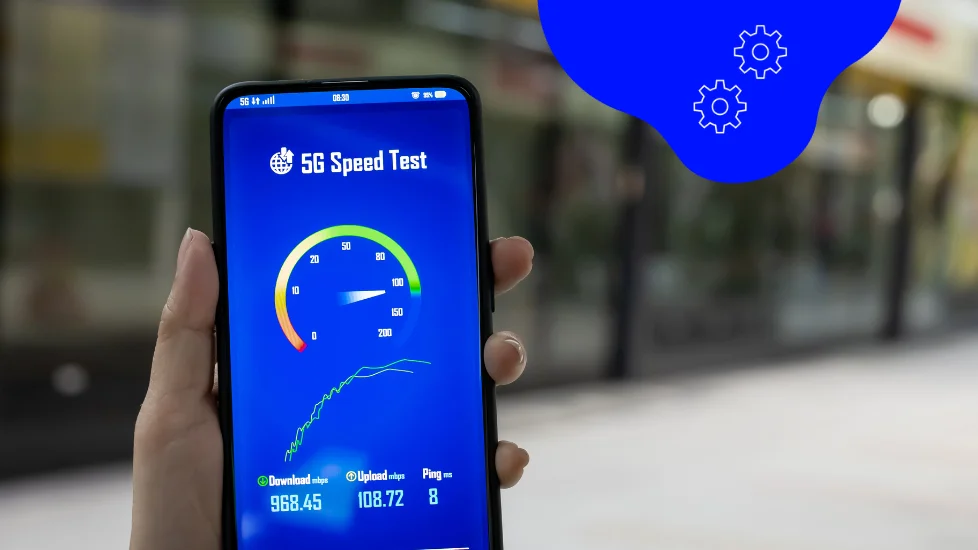Mobile internet for everyone and everything
LTE Router Test
Which Router Is the Best?
Streaming the latest season of your favorite show, making a video call to a friend, or browsing through Google for information on your next assignment – fast Internet is indispensable for all of these tasks. But what can you do if you don’t have an adequate DSL infrastructure? A reliable LTE router is needed to connect your WLAN-enabled devices to the network. The Internet is full of test reports with complex technical specifications that make it difficult to decide on the right device. We have run the LTE router test for you and present three routers, one of which will certainly meet your needs.
What Is an LTE Router?
Before you decide on a router, you should understand what the matter is all about. LTE stands for “Long Term Evolution” and is a mobile communication standard that is often also referred to as fourth-generation mobile communication technology (4G). Mobile data can be transmitted at high speed via LTE. Accordingly, an LTE router is a network device that establishes an Internet connection via the mobile network and enables other devices to access the Internet via a local network.
LTE routers can be used in two application areas. Mobile routers equipped with rechargeable batteries provide an Internet connection on the move. Stationary, LTE routers act as a reliable Internet source at home and offer a good alternative to regular DSL and fiber-optic cables. All you need to get the router up and running is a data tariff and a SIM card. You simply insert the SIM card into the router’s SIM slot and you are already connected to the Internet via the mobile network.
Which tariff is the right one for you depends on the signaling speed you need. Sending a message via WhatsApp only needs 10kB, but streaming videos can use several GB per hour. Depending on what you want to use the Internet connection for, you should therefore ensure unlimited data volume and select a suitable speed profile. The number of devices connected to the router can also affect the connection speed. So hopefully your roommates aren’t as Netflix-obsessed as you are!
Which Router Is Right For You?
All right, how such an LTE router works is clear now. But which one is the right one? Depending on your budget and the purpose of the router, the answer can be quite different. We have tested the best LTE routers from three different price ranges for you.
TP-Link TL-MR6400: the affordable all-rounder
Price: from 82.-

The TL-MR6400 is the cheapest router in our selection and has an integrated 4G/LTE modem and a SIM card slot. After inserting a SIM card, the device can be put into operation via WLAN or LAN connection. With speeds of up to 150 MBit/s downstream, the router offers lower speeds via 4G than higher-quality routers, but it will meet almost every application in everyday life with its speed profile.
Those who count on the fastest transmissions in the home network might be disappointed by the 300 MBit/s and the 2.4 gigahertz frequency that the router offers. However, the relatively low price and the easy handling of the router compensate for this small shortcoming: No complex configurations are necessary and important functions can be controlled directly on the router. The connection option with WPS, for example, eliminates the annoying manual entry of the WLAN password. Everything else can be easily adapted to your own preferences via a free app using your smartphone or tablet.
The robust TL-MR6400 convinces with good 4G/LTE reception with reliable performance and response time. The router’s functions are intuitive, but quite limited in number. Thus, those who appreciate high user-friendliness, do not want to spend too much money and do not depend on high-speed in every situation will find a reliable and solid router in the TL-MR6400.
ASUS 4G-AC68U: the upper middle class
Price from 267.-

The Asus 4G-AC68U impresses with strong technical features. Simultaneous dual band WLAN promises surfing with speeds of up to 600 MBit/s in the 2.4 GHz range and up to 1300 MBit/s in the 5 GHz range. The combination of the two mobile frequencies enables handling large files and smooth streaming of videos. The router does not have an integrated modem, but it does have a port for an external modem in addition to the SIM card slot so that an Internet connection can be established via DSL or cable if the 4G network gets cut off.
However, the Asus 4G-AC68U stands out the most from other LTE routers in our test with its large range. According to the manufacturer, up to 150 cubic meters can be covered with a WLAN connection via the AC standard. Thus, the router is especially suitable for those who rely on an extensive network coverage. In contrast, the router’s potential will probably not be utilized as much in the small student digs.
In the test, the router convinces with a very fast and stable Internet connection. The wide range of functions and ports also stands out positively: Computers and laptops can be connected via cable over four LAN ports and external storage media via USB 2 and USB 3. The Intrusion Prevention System (IPS) integrated in the Asus 4G-AC68U offers protection for all connected devices in the network. A special security feature makes it possible to monitor or restrict the surfing behavior of others. Whether this feature acts as a parental control or as protection against surfing-addicted roommates is entirely up to the user.
However, you also have to make a few compromises with this router. The LTE configuration could be simpler and you have to be patient for a possible restart. If you can live with these weaknesses, the Asus 4G-AC68U is a router that scores with fast speed and great coverage. It is certainly a good choice for those who rely on strong, area-wide Wi-Fi at all times!
AVM FRITZ!Box 6890 LTE: the exclusive multi-talent
Price from 296.-

Last but not least, we tested the AVM FRITZ!Box 6890 LTE. The high price might be deterrent at first, but is justified upon closer inspection. The FRITZ!Box convinces us in every respect. It integrates both a DSL and an LTE modem and thus differs from the two previous candidates.
LTE only works as a fallback solution if the DSL connection does not work properly. The router supports all frequency bands and achieves transmission speeds of up to 300 MBit/s. The support of the AC standard can even enable strong 1,733 MBit/s via WLAN, which might make the heart of every high-speed lover beat faster.
Ports were not skimped on either. Whether USB 3, Gigabit or DSL port, every device should be able to be connected properly here. The FRITZ!Box also scores with the possibility to make phone calls. The integrated telephone system supports analog telephony, VoIP and ISDN, so that telephone calls via the Internet or fixed-line are easily possible. Thanks to current security standards, safe surfing is also guaranteed. It’s hard to find functions that the router doesn’t fulfill.
The router convinces with high user-friendliness and excellent quality. If you only expect the bare essentials from a router, the FRITZ!Box is probably beyond the scope. However, if you are looking for a top product with enormous functionality, the AVM FRITZ!Box 6890 LTE is a very good choice.
What Else Do You Need to Know?
Regardless of which router you choose, you have to keep in mind that the speeds specified for the router always refer to the router’s potential under ideal conditions. For example, if a router is specified with a speed of one gigabit, you first have to consider that only 300 MBit/s are available via 4G/LTE in theory. Secondly, the expected transmission speeds in practice are around 10-150 MBit/s depending on the proximity to the nearest LTE antenna and its utilization. Higher speeds are only possible for users of the upcoming 5G mobile standard. Thus, the real speed of your connection depends on a variety of factors that you should keep in mind when setting up your router.
However, you don’t just have to be aware of the specified speed. 5G is on the rise! At the moment, you should be well served with the selection of routers, but it will be worth keeping your eyes open in the future. The first 5G routers are already on the market, and it is only a matter of time before the new mobile standard will dominate the range of routers.
Bottom Line
Depending on your requirements and preferences, a different LTE router is suitable for your home. Whether it’s the TP-Link TL-MR6400 as a reliable router for a small budget, the ASUS 4G-AC68U as a more expensive all-rounder for extensive use, or the AVM FRITZ!Box 6890 LTE for demanding users who don’t want to save on features or costs – our selection of LTE routers offers you powerful options to be ideally networked even far away from cable and fiber-optic networks.
All three routers presented are compatible with our Digital Republic SIM cards. For optimal usage, we recommend testing the Flat 300 subscription free of charge for 30 days. The speed is ideal for home office and is sufficient for multiple connections at the same time. Ideally, you will reach 300/150 MBits for downloads and uploads and enjoy unlimited data throughout Switzerland. Do a speed test during the trial month to identify the real speed at your location. Afterwards, you can simply adjust the subscription to the actual performance achieved in order to only pay for the speed that you can effectively use. All you have to do now is select the right router, insert the SIM card, and you’re ready to go.
Discover Our Other News Articles

The Development of Our Ideal Cell Phone Plans for Switzerland
The path to the current Trio Flat Mobile Swiss, Flat Mobile, and Flat Mobile Plus cell phone plans is also an example of how Digital Republic wants to function as a provider and where its priorities lie. We have quickly transformed ourselves from a pure data SIM provider to a cell phone plan provider. And we have completely rethought the development process.

The Affordable Mobile Provider With Award-Winning Service
When it comes to mobile providers in Switzerland, the wheat is often separated from the chaff when it comes to price. Either you pay little for your subscription and do without services like support or 5G, or you go to one of the big providers and pay more than you might like. At Digital Republic, you get both!

Why 5G Is Not Always Equally Fast
Sometimes fast, sometimes slow, sometimes suddenly 4G again. The network indicator on your smartphone suggests that it is connected to the internet via either 4G or 5G. In fact, a complex mechanism and a lot of communication between your smartphone and the network is taking place in the background to ensure that you always have the best possible connection.
